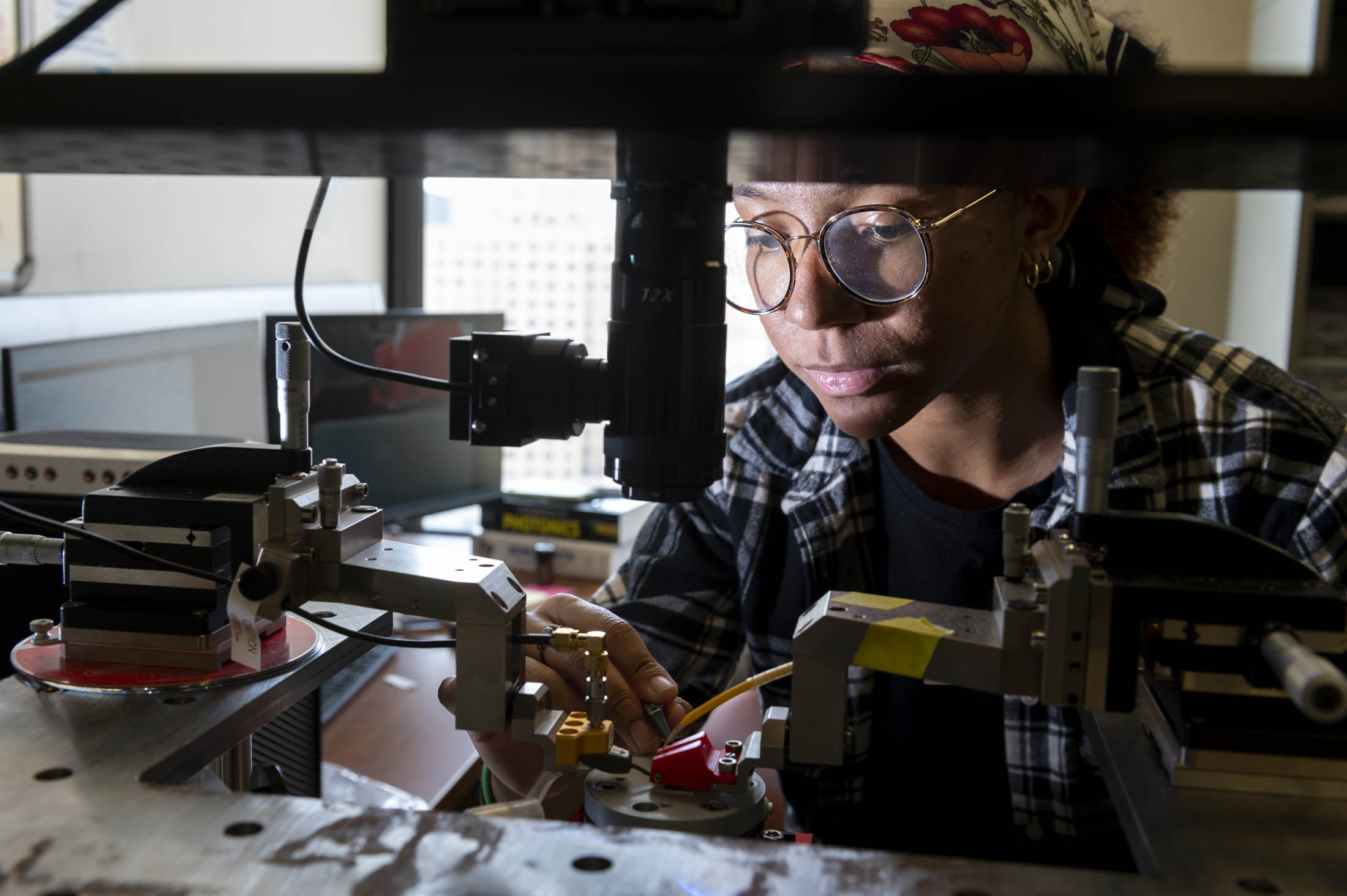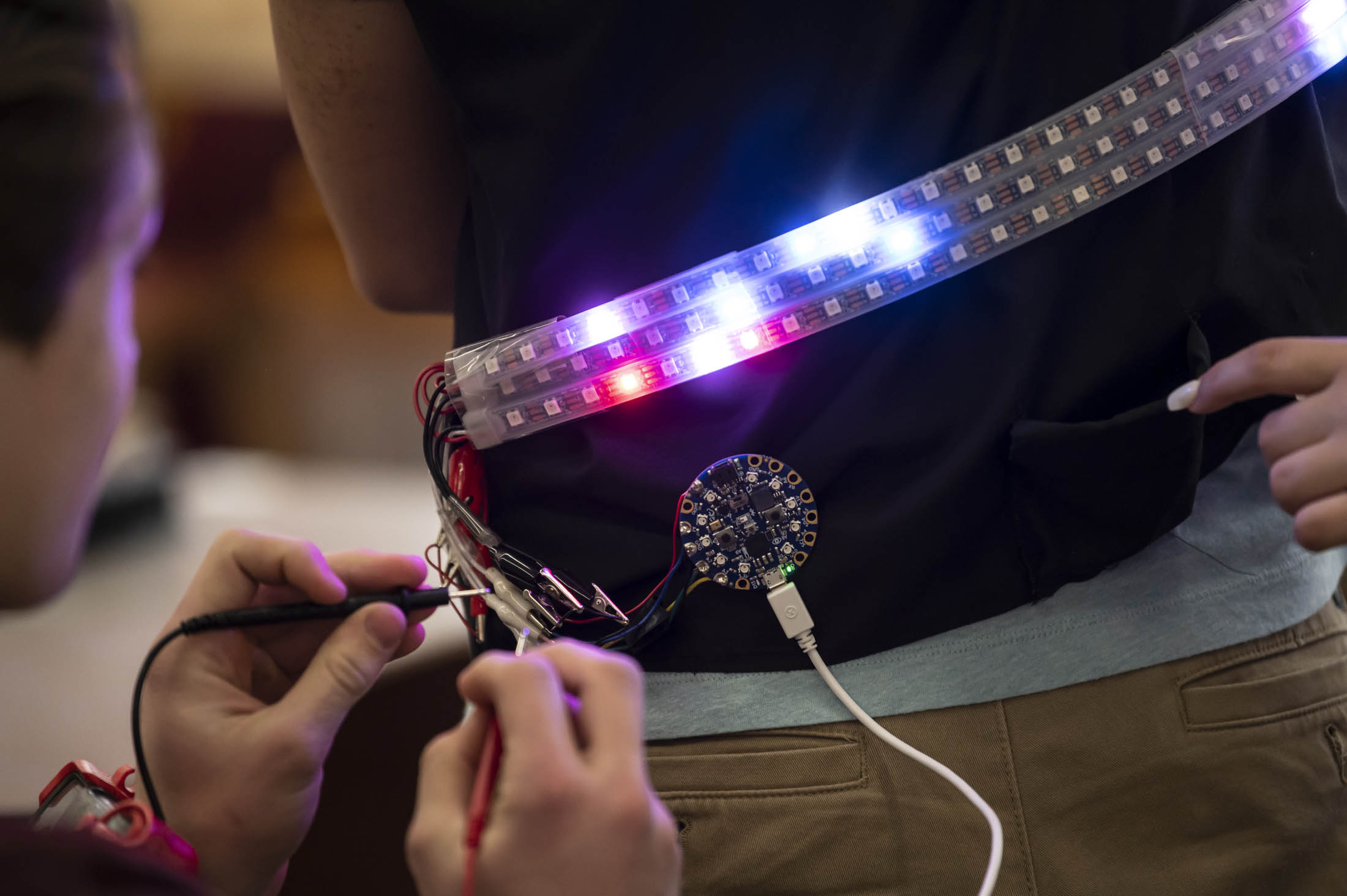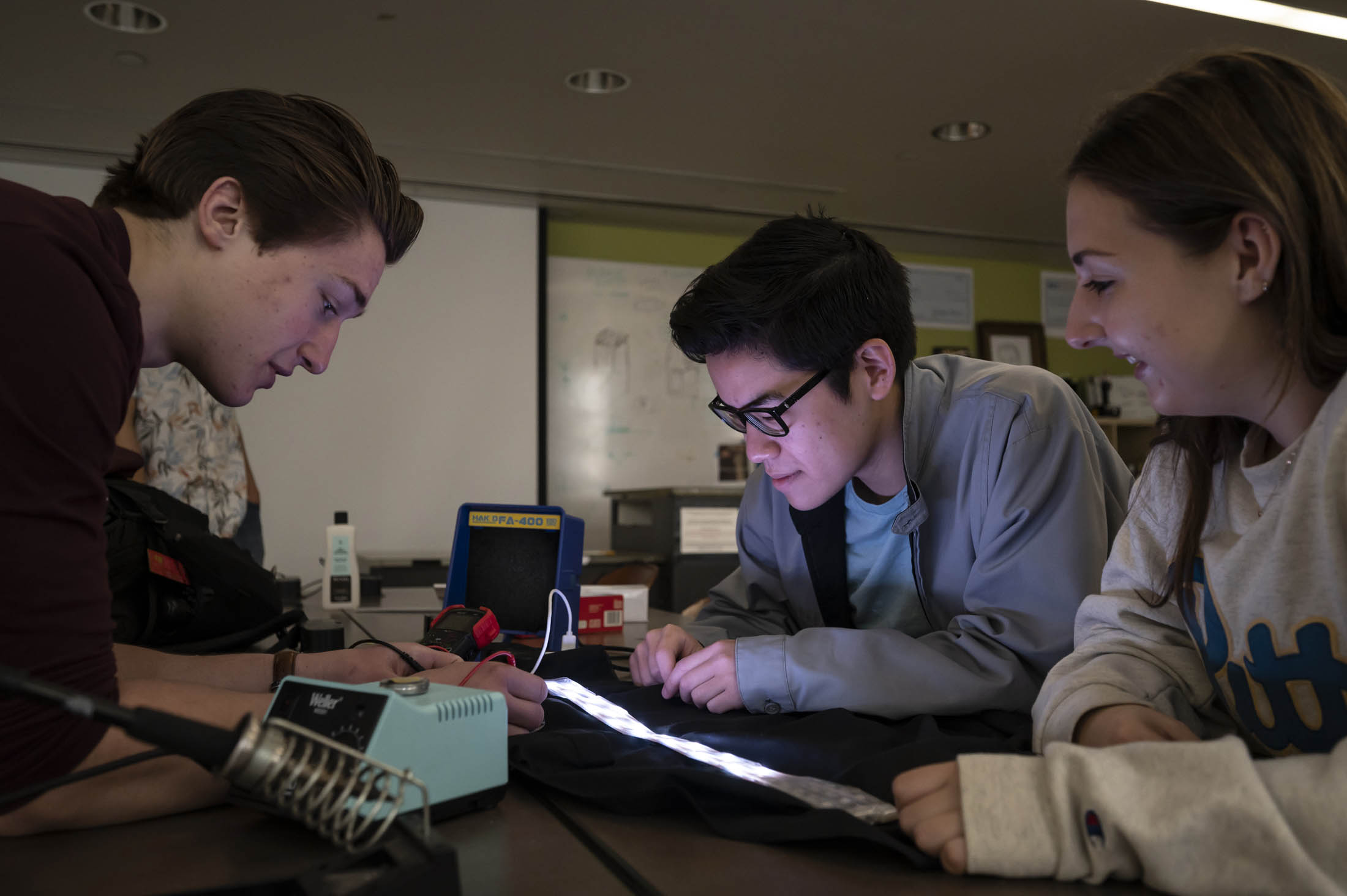WELCOME TO ECE AT PITT
Why Transfer | Who can Transfer | Eligibility | Application Process/Deadlines | What Happens After You're Admitted | Resources
At the Swanson School of Engineering, Pitt’s Electrical and Computer Engineering (ECE) programs prepare students for exciting careers in AI, robotics, software engineering, power systems, and more. You'll learn through hands-on projects, innovative research, and an ABET-accredited curriculum—all in a city known for its growing tech and energy industries.
WHY TRANSFER TO ECE?
Specialized Skills with Concentrations & Certificates
Looking to focus your studies? ECE students can choose from concentrations in high-demand areas like autonomous systems, electric power, integrated circuit design, and software engineering. Students can also pursue a Certificate in Cybersecurity in Emerging Engineering Systems to build expertise in a rapidly growing field.
Industry Connections & Career Prep
Through internships, co-ops, and capstone projects, you’ll work with companies in AI, energy, and advanced manufacturing, building experience and a competitive edge for your career or grad school.
Real Research Experience
Get involved in cutting-edge research on topics like machine learning, nanotech, smart grids, and autonomous systems—whether for credit, pay, or as a volunteer.
Alumni Network
Join a global community of successful Pitt ECE grads who offer mentorship, career support, and connections in every industry.
Support for Transfer Students
You’ll get one-on-one advising, assistance mapping out your degree plan, and a welcoming environment designed to help you succeed from day one.
WHO CAN TRANSFER TO ECE?
Whether you're already a Pitt student or coming from another college or university, you may be eligible to transfer into the Electrical and Computer Engineering (ECE) program.
If you're transferring from another college or university (two-year or four-year, accredited):
- A 3.0 cumulative GPA is required.
- You should have at least 24 credits appropriate for engineering, including two-semester sequences of Calculus, Chemistry, Calculus-based Physics, and Computer Programming.
- While not required, classes in programming, such as C++, are beneficial to students in ECE.
To determine how your classes align with Pitt's requirements, we recommend using the Transfer Tool provided by the Office of Admissions.
If you're a current Pitt student (from another school, college, or regional campus):
- A 3.0 cumulative GPA is required.
- You'll need to complete the Freshman Engineering Curriculum with grades of C or better in all courses.

ELIGIBILITY GUIDELINES
Transferring into Pitt's Electrical and Computer Engineering (ECE) program is a significant step—and we're here to help clarify what's needed to qualify.
General Credit Transfer Policy
- You can transfer up to 60 credits from a two-year college or up to 90 credits from a four-year college or university.
- If you're transferring engineering courses, it helps if they come from an ABET-accredited program, but it's not required.
- Every course is carefully reviewed to determine its fit within the ECE curriculum.
- You'll need to meet the minimum GPA requirement (3.0).
- If your school has an articulation agreement with the Swanson School of Engineering, that can make the transfer process even smoother.
- Courses are evaluated individually to determine how they align with the Swanson School of Engineering's curriculum.
- Specifically for Community College of Allegheny County (CCAC) Students, we strongly recommend completing the courses below before transferring:
- Calculus 1&2
- Physics 1&2&3
- CIT 0119&0145
Dietrich School of Arts & Sciences (A&S)
- You must meet the minimum GPA requirement (3.0) and have completed the correct courses.
- We recommend meeting with the COE/EE Program Advisor early to ensure your courses align with ECE requirements.
School of Computing and Information (SCI)
- Transfers are possible if you've completed key math, physics, and programming courses.
- Students in SCI often have transferable interests to Computer Engineering disciplines.
Regional Campuses
- Students must meet the engineering GPA (3.0) and course requirements to be eligible for admission.
- It is recommended that students consult with their regional campus advisor early on to ensure they're on the right track for a smooth transition.
APPLICATION PROCESS & DEADLINES
If you're currently attending another college or university, you'll apply to Pitt through the transfer admission process. Visit the step-by-step guide on the Transfer Student Admission Process – Pitt Admissions.
- Complete and submit your application.
- Pay the $55 application fee.
- Send official transcripts from all colleges or universities you've attended.
- If you've taken AP or IB exams, be sure to send your scores; they may count toward your degree.
If you are an international student at a university or college in the US or abroad and wish to transfer into Pitt's Swanson School of Engineering, refer to this page for details.
Application Deadlines
- Fall: August 1
- Spring: December 1
- Summer: April 1
If you're currently enrolled at Pitt (including regional campuses or other schools like A&S or SCI), here's how to apply to the ECE program:
- Meet with your current academic advisor and let them know you're interested in transferring into ECE and that you need a Program Change Form.
- Complete and submit the Program Change Form during your final semester in your current program. If you’re planning to transfer in the Spring, please submit your Program Change Form by November 1. If you’re aiming for the Fall, please submit by April 1. On the form, make sure to specify whether you're applying to Electrical Engineering or Computer Engineering.
- Wait for final grades
- Admissions decisions will be made after your final grades are posted.
WHAT HAPPENS AFTER YOU'RE ADMITTED?
Once you submit your tuition deposit and officially join Pitt (students coming from another college or university) or once your Program Change Form is approved (current Pitt students), you'll:
- Be assigned a faculty advisor to guide you through the program:
Computer Engineering students: Dr. Samuel Dickerson
Electrical Engineering students: Dr. Robert Kerestes - Receive a list of your remaining degree requirements along with a suggested course schedule for your first semester—including enrollment in ENGR 0087: Transfer Engineering Seminar and ECE 1885: Departmental Seminar
- Have the option to meet with your advisor or an academic administrator to go over your plan and ask any questions.
- Attend both the Swanson School Transfer Orientation and the ECE Transfer Orientation to get introduced to your new academic community.

RESOURCES & SUPPORT FOR TRANSFER STUDENTS
Transferring to a new university is a big move, but Pitt offers plenty of resources to help you every step of the way.
- Transfer Credit Tool: Use this tool to determine how your previous coursework may be applied to Pitt.
- Swanson School Transfer Page: Find helpful information specifically tailored to engineering transfer students, including admissions guidance and degree planning resources.
- Pitt Student Affairs Transfer Page: Explore campus life, housing, student involvement, and additional support designed for transfer students.
- Tuition & Payment Information: View current tuition rates and learn how to manage billing through PittPay.
- Financial Aid for Transfer Students: Get details on applying for financial aid, submitting the FAFSA, and accessing transfer-specific aid resources.
- Scholarships: Merit- and need-based scholarships may be available to eligible transfer students.
- Financial Wellness Center: Access tools and one-on-one support for budgeting, financial planning, and managing student loans.
ECE Curriculum, Degree Planning, Career Path:
Dr. Samuel Dickerson, Director of Computer Engineering Program: dickerson@pitt.edu
Dr. Robert Kerestes, Director of Electrical Engineering Program: rjk39@pitt.edu
Transfer Process and Credits:
Christopher Kirchhof, Director of Undergraduate Recruitment & Transfer Student Services: 412-624-9825, ssoetransfer@pitt.edu




